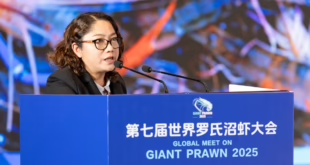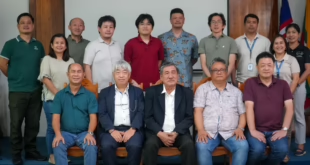By Development Communication Section
Former SEAFDEC/AQD scientist and current Director of Aquatic Animal Health at Integrated Aquaculture International Dr. Celia Lavilla-Pitogo presented a lecture on “Understanding the microsporidian parasite, Enterocytozoon hepatopenaei (EHP), and its implications on shrimp hatchery and farm management” last 27 April 2016 at AQD’s Tigbauan Main Station.
Dr. Pitogo explained that microsporidia are a group of obligate intracellular eukaryotic parasites first identified as the cause of diseases in silkworms and are now causing well-known diseases like cotton shrimp in Penaeus indicus and milky ovary in Penaeus monodon.
The methods of diagnosis for EHP include rapid molecular method by polymerase chain reaction, microscopy of fresh hepatopancreas, and histopathology. She also discussed how EHP does not directly cause mortality in shrimps but can potentially cause severe growth retardation and may affect farm production.
As part of her recommendations, Dr. Pitogo presented various ways to minimize or eliminate EHP from various sources: (1) in maturation facilities, through water management and good nutrition; (2) in hatcheries, through hygienic handling of eggs and nauplii and good nutrition; and (3) in farms, by thorough disinfection of ponds (using hydrated lime or hydrochloric acid on bottom and side walls) prior to start of every culture and strict quality control in postlarvae selection.

 SEAFDEC/AQD Southeast Asian Fisheries Development Center | Aquaculture Department
SEAFDEC/AQD Southeast Asian Fisheries Development Center | Aquaculture Department



